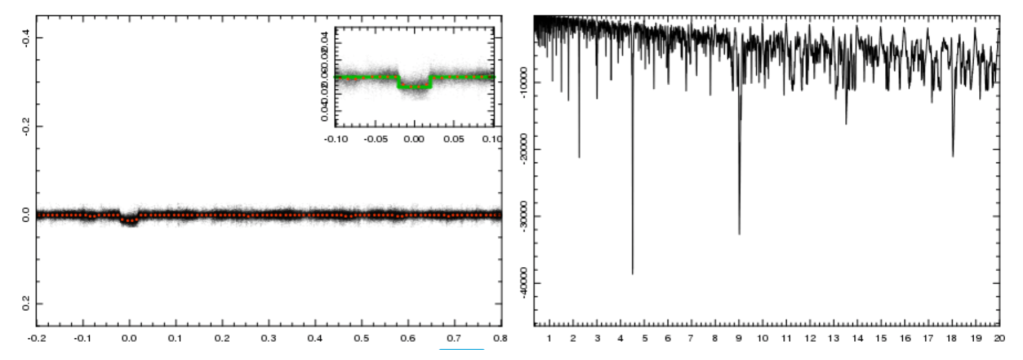PROTECT YOUR DNA WITH QUANTUM TECHNOLOGY
Orgo-Life the new way to the future Advertising by AdpathwayToday we a guest blog by Sam Gill. Sam Gill is a research assistant at the University of Warwick. He studies long-period planets discovered with TESS and leads the monotransit working group within NGTS. He also researches red dwarfs to empirically calibrate the physical properties of the latest-type stars and is a keen spectroscopist and binary star enthusiast. In his free time, Sam enjoys Brewing and hiking with his beagle, Bruce.
In 2015, more than half of all known exoplanets with masses determined to better than 20 per cent were found from ground based surveys for transiting exoplanets. One such survey which you may know from the successful Zooniverse project searching for variable stars is the Wide Angle Search for Planets (WASP), with installations in Tenerife and South Africa. Both camera arrays have taken over 430 billion measurements of 30 million stars and has found over 150 new planets with many more candidates.
Typically, WASP found planets spanning the masses of Saturn to a few times of Jupiter, along with many low-mass stars which have radii similar to Jupiter. If we look at the mass-radius diagram for planets (with masses known to better than 20%) found around other stars, we see that there is a dearth of those with masses below Saturn. These planets are notoriously hard to identify around stars like our Sun because of their small comparative size. However, these planets should be detectable around much smaller stars with ground-based telescopes which is where the Next Generation Transit Survey (NGTS) comes in.
NGTS is located at the Paranal observatory and consists of 12 fully-robotic telescopes operating at red-optical wavelengths (520-890 nm). This maximises sensitivity to bright and relatively cool and small stars enabling us to find planets less massive than Saturn. With a field of view of 2 degrees per telescope and an average cadence of 13 seconds, NGTS can take over 200 GB of images each night which include many thousands of stars.
 The 12 NGTS telescopes at Cerro Paranal.
The 12 NGTS telescopes at Cerro Paranal.Data from NGTS is processed so that the relative brightness of each star can be measured with the influence of the atmosphere mitigated. These data can then be searched using a box-fitting algorithm which searches for periodic dips in a stars brightness which is a characteristic trait of transiting exoplanets. The box-fitting algorithm is powerful and can find many potential planet candidates in our data. The NGTS consortium tries their best to find as many planet candidates as they can but some of these candidates turn out to be false positives. We are successfully finding planets in NGTS data, but the size of our datasets are so large the we may have overlooked some of the most promising planet candidates. That is were you come in.
 Phase folded NGTS data of NGTS-2b (left panel) with the box least-squares algorithm power spectrum (right panel)
Phase folded NGTS data of NGTS-2b (left panel) with the box least-squares algorithm power spectrum (right panel)The aim of Planet Hunters NGTS is to find planets in NGTS data. To do this, we have created a variety of plots (described in a future blog post) embedded in multiple workflows which will help identify promising candidates and many other interesting systems. Today, we just launched two new workflows that you can check out the Odd Even Transit Check and the Secondary Eclipse Check to help vet the best candidates identified by the Exoplanet Transit Search workflow. With your help, we can focus our efforts on the most promising systems and work towards completing a broader consensus of exoplanets. We look forward to you classifications!























 English (US) ·
English (US) ·  French (CA) ·
French (CA) ·